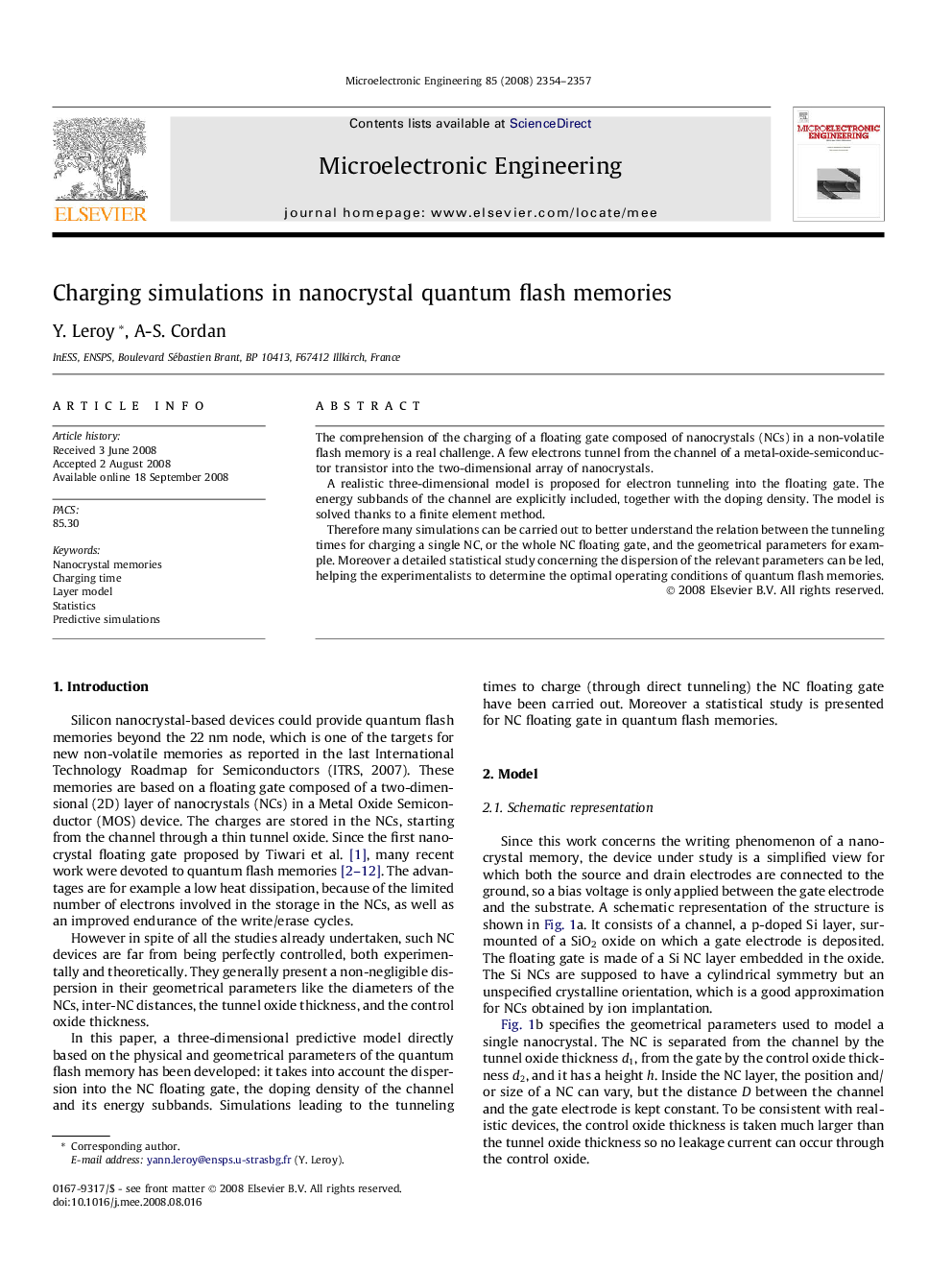| Article ID | Journal | Published Year | Pages | File Type |
|---|---|---|---|---|
| 543491 | Microelectronic Engineering | 2008 | 4 Pages |
The comprehension of the charging of a floating gate composed of nanocrystals (NCs) in a non-volatile flash memory is a real challenge. A few electrons tunnel from the channel of a metal-oxide-semiconductor transistor into the two-dimensional array of nanocrystals.A realistic three-dimensional model is proposed for electron tunneling into the floating gate. The energy subbands of the channel are explicitly included, together with the doping density. The model is solved thanks to a finite element method.Therefore many simulations can be carried out to better understand the relation between the tunneling times for charging a single NC, or the whole NC floating gate, and the geometrical parameters for example. Moreover a detailed statistical study concerning the dispersion of the relevant parameters can be led, helping the experimentalists to determine the optimal operating conditions of quantum flash memories.
